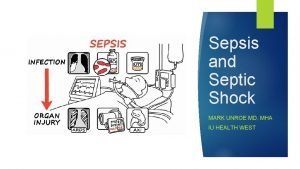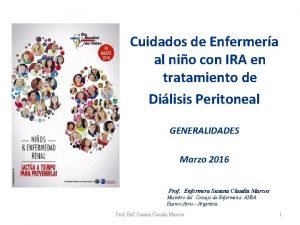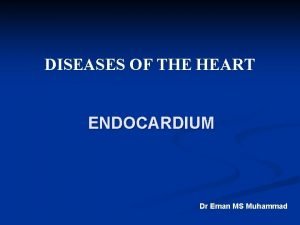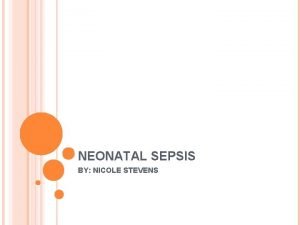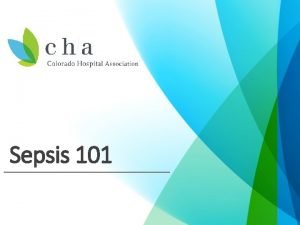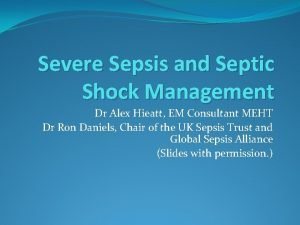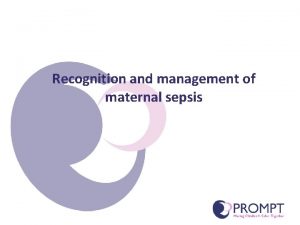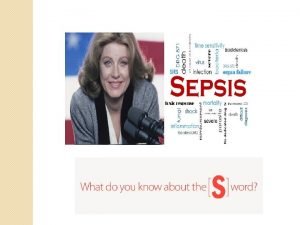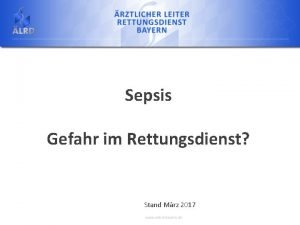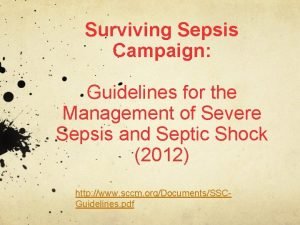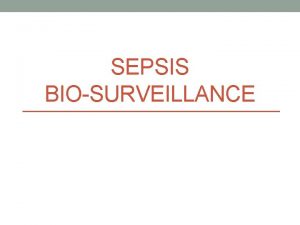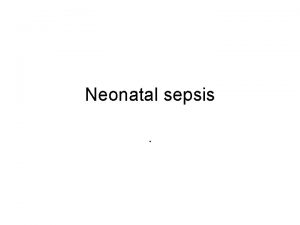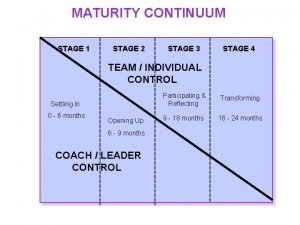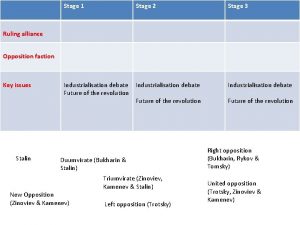Sepsis 101 Stage 1 What is Sepsis Source















- Slides: 15

Sepsis 101

Stage 1 What is Sepsis? Source: world-sepsis-day. org

What is Sepsis? Source: world-sepsis-day. org


Sepsis at a Glance

Sepsis is a medical emergency. . . minutes matter Every hour a patient in septic shock doesn't receive antibiotics, the risk of death increases by 7. 6%. Source: Advisory Board Company: “Why sepsis screening isn't one-size-fits-all” Expert Insight | December 11, 2013

Speed is Important Time is Tissue! Would you wait an hour to treat a stroke? Heart attack? Mortality rates increase as the number of failing organs increase.

Know the Signs & Symptoms

Know the Signs & Symptoms

3 -Hour Bundle To be completed within 3 hours of time of presentation*: 1. Measure lactate level 2. Obtain 2 sets of blood cultures prior to administration of antibiotics from 2 different sites. 3. Administer broad spectrum antibiotics 4. Administer 30 ml/kg crystalloid IVF for hypotension or lactate ≥ 4 mmol/L * “Time of presentation” is defined as the time of earliest chart annotation consistent with all the elements of severe sepsis or septic shock ascertained through chart review. http: //www. survivingsepsis. org/Site. Collection. Documents/SSC_Bundle. pdf

6 -Hour Bundle To be completed within 6 hours of time of presentation 1. Apply vasopressors (for hypotension that does not respond to initial fluid resuscitation) and titrate pressors to a mean arterial pressure (MAP) ≥ 65 mm Hg. 2. In the event of persistent hypotension after initial fluid bolus (MAP < 65 mm Hg) or if initial lactate was ≥ 4 mmol/L, re-assess volume status and tissue perfusion and document findings. 3. If initial lactate is elevated > 2, re-measure lactate within 6 hours. http: //www. survivingsepsis. org/Site. Collection. Documents/SSC_Bundle. pdf

Keys to Survival § Early Identification ◦ Subtle signs and symptoms ◦ Don’t wait until your patient is hypotensive! § Appropriate antibiotics in a timely manner ◦ For every hour antibiotics are delayed during septic shock, the patient’s risk of death increases by 7. 6% ◦ The single most important intervention in treating sepsis § Source Control ◦ Antibiotics ◦ Surgery § IV Fluids and vasopressors if necessary (hemodynamic stability) § Emergency supportive care for acute organ dysfunction ◦ Ventilator ◦ Continuous Renal Replacement Therapy (CRRT) ◦ Prone positioning

Patient’s journey does not end at discharge Other symptoms can include: • Sleep disturbance, including insomnia • Extreme tiredness and fatigue • Inability to concentrate • Loss of confidence and self-belief 1_ Kessler RC, Sonnega A, Bromet E, et al. : Posttraumatic stress disorder in the National Comorbidity Survey. Arch Gen Psychiatry, 52: 1048– 60, 1995. // Davydow DS, Gifford JM, Desai SV, et al. : Posttraumatic stress disorder in general intensive care unit survivors: a systematic review. Gen Hosp Psychiatry, 30: 421 -434, 2008.

Healthcare Providers Can. . . Prevent infections. • Hand washing = #1 way to prevent infection • Sterile Technique and Maintenance • Foley insertion (and maintenance) • Line insertion and draws (and maintenance) • Invasive procedures • Vaccines • Flu and pneumonia shots Reassess patient management. Check patient progress frequently. Reassess antibiotic therapy 24 -48 hours or sooner to change therapy as needed (narrow the spectrum). Be sure the antibiotic type, dose, and duration are correct. Educate patients and their families. Stress the need to prevent infections, manage chronic conditions, and seek care if signs of severe infection or sepsis are present.

 Q sofa
Q sofa Single stage and two stage tender
Single stage and two stage tender 1. denial
1. denial What is drama
What is drama The audience sits on all four sides of the acting area
The audience sits on all four sides of the acting area Stage right and left
Stage right and left Cross the procenium
Cross the procenium Hoja de balance hidrico en enfermeria
Hoja de balance hidrico en enfermeria Dental sepsis
Dental sepsis Prevention of puerperal sepsis
Prevention of puerperal sepsis How do you get sepsis
How do you get sepsis Dr ali hieatt
Dr ali hieatt Sepsis 6 bundle
Sepsis 6 bundle Sepsis triangle
Sepsis triangle Sepsis
Sepsis Surviving sepsis definition
Surviving sepsis definition
